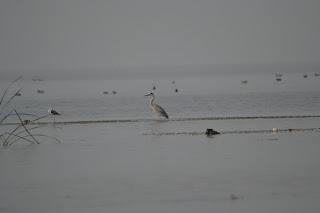 Did you always want to contribute for the cause of
environment but didn’t know how? Then this march would perhaps be the best time
for you to actually put your thoughts to action and make it count. What more
you’ll have the company of about 1.8 billion like minded environmentalists from
across 150 countries in the world.
Did you always want to contribute for the cause of
environment but didn’t know how? Then this march would perhaps be the best time
for you to actually put your thoughts to action and make it count. What more
you’ll have the company of about 1.8 billion like minded environmentalists from
across 150 countries in the world.
The Earth hour is a simple people-backed and people-powered
idea in which people switch off lights for an hour, signaling their concern for
the environment. ’The Earth Hour’ now in
its fifth year is witnessed in the end of March. This year the Earth Hour will
be celebrated on the 23rd of March between 20:30 hrs and 21:30
hrs.
This symbolic gesture of switching off lights doesn’t just
save a buck or two but this small action
goes a long way in protecting our planet. The cascaded effect of billions of
people switching off their lights across the world saves a lot of electricity
and in turn cuts down several tonnes of carbon dioxide emissions. Having said
that it is also necessary to add (at the risk of sounding a little
contradictory)these figures are way lesser than our targeted cuts in CO2
emissions to actually have a tangible and a positive impact.
But the question here is does switching off lights just for
an hour solve all the problems? Certainly not, Earth Hour is no panacea to all
the environmental problems that plague us today. Simply switching off lights
for an hour and then moving on to your old high-carbon-consumption lifestyle is
definitely doing no good. Our action has to move ‘beyond the Earth Hour’.
One may feel that an individual contribution to the cause of
environment would be analogous to just a drop in the ocean. But don’t many
drops together form an ocean? This is exactly what the motive of Earth Hour
2013 is. If each one of us stands united and pledge to adopt a more eco
friendly lifestyle, we can make a difference. In fact didn’t the idea of the
Earth Hour start off in one city and then went on to sweep the world! Thus this
idea is really tangible and we all need to realize is that every single action
counts!
To adopt a more sustainable lifestyle need not necessarily mean
going back to the Stone Age; It’s only about making a few changes in our day to day activities. It can possibly start with avoiding use of plastic, using public
transport instead of a personal one, buying groceries grown locally, switching
to renewable sources of energy and many such simple activities would help make a difference.
So let’s all stand together and send out a message to all the
cynics that together we can, with our actions pave a way for a better tomorrow!
Article by Vishesh Pillai (Intern - Earth Hour)































